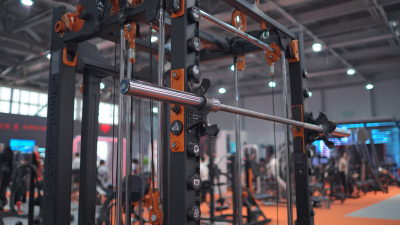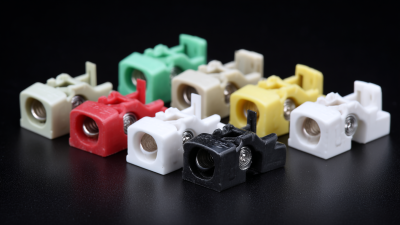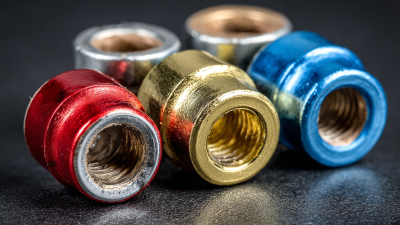The Ultimate Guide to Choosing the Right Cable Wire for Your Electrical Projects
When embarking on electrical projects, selecting the appropriate cable wire can make all the difference between success and failure. In an ever-evolving landscape of electrical applications, understanding the nuances of various cable types is essential for both safety and efficiency. This guide aims to illuminate the intricacies of choosing the right cable wire for your needs, presenting a "Top 10" list of considerations every electrician and DIY enthusiast should keep in mind.
From the correct gauge and insulation types to the specific application each wire is best suited for, the decisions surrounding cabling can seem daunting. Whether you're wiring a new home, upgrading an existing system, or simply tackling a small repair, the proper cable wire not only ensures performance but also compliance with safety standards. By delving into the major factors that influence your choice, this guide will equip you with the knowledge necessary to make informed decisions that align with your project's requirements.

Understanding Different Types of Cable Wires for Electrical Projects
When embarking on electrical projects, understanding the different types of cable wires is crucial for selecting the right materials that ensure safety and efficiency. The wire and cable market is diverse, comprising electric wire, magnet wire, fiber wire, aluminum cable, and copper cable, each serving specific applications. For instance, copper cables, recognized for their excellent conductivity, are widely used in residential and industrial wiring. Current forecasts suggest that the global copper wire market is poised for significant growth, expected to reach approximately USD 284.70 billion by 2034, having been valued at USD 159.50 billion in 2025.
Additionally, aluminum cable is gaining traction due to its lightweight nature and cost-effectiveness, particularly in overhead power line applications. The demand for fiber wire is also on the rise, driven by the increasing need for high-speed internet services. As the wire and cable market expands, professionals must stay informed about these various types and their evolving features to make well-informed decisions for their electrical projects. Each type of cable presents unique advantages that could significantly impact project outcomes, making it essential to choose wisely.
The Ultimate Guide to Choosing the Right Cable Wire for Your Electrical Projects
| Cable Type | Application | Gauge (AWG) | Voltage Rating | Insulation Type |
|---|---|---|---|---|
| Romex (NM Cable) | Residential wiring | 14, 12, 10 | 600V | PVC |
| THHN Wire | Commercial applications | 10, 12, 14 | 600V | Thermoplastic |
| UF Cable | Underground wiring | 14, 12, 10 | 600V | PVC |
| SJO Cable | Portable power tools | 12, 14 | 300V | Rubber |
| Coaxial Cable | Television and internet | Various | 75Ω | PVC |
Identifying Key Factors in Cable Wire Selection for Your Needs
Selecting the right cable wire for electrical projects involves understanding several key factors that can significantly impact performance and safety. According to industry analyses, the global wire and cable market is projected to witness substantial growth, driven by increasing demand in sectors such as renewable energy and construction. The market for electric wire, magnet wire, and fiber wire is expected to expand notably, with electric wire leading the segment due to its essential role in various applications.
When choosing cable wire, it is crucial to consider the type of material used. Copper and aluminum remain the dominant materials, with copper exhibiting superior conductivity, making it ideal for high-performance requirements. Recent data suggests that the demand for aluminum cable is also rising, primarily due to its lightweight properties and cost-effectiveness in specific applications.
Moreover, as renewable energy sources like solar and wind gain traction, the need for specialized cables that can withstand varying environmental conditions is becoming increasingly important. The focus on sustainable practices in the industry further emphasizes the necessity for eco-friendly cable solutions that align with modern energy needs.
Comparing the Performance of Copper vs. Aluminum Cable Wires
When comparing copper and aluminum cable wires for electrical projects, several factors come into play, particularly performance, cost, and application suitability. Copper wires have long been favored due to their superior conductivity and reliability. They allow for efficient energy transmission with minimal losses, making them a top choice for high-performance applications. However, copper's cost and weight can be significant downsides, especially for large-scale projects.
On the other hand, aluminum cables have gained popularity, especially in contexts where cost-effectiveness is essential. Recent data highlighted a notable rebound in aluminum wire exports, signaling an increased demand likely propelled by the growing focus on renewable energy initiatives. Aluminum is lighter and less expensive than copper, making it easier to handle and install, particularly in large installations such as solar arrays and wind farms. As the market shifts towards sustainable practices, the use of aluminum cable wires in energy projects is expected to grow, further enhancing its appeal in various electrical applications.
Assessing Safety Standards and Regulations for Electrical Cables
When undertaking electrical projects, it's crucial to understand the safety standards and regulations that govern the use of cable wires. These standards are designed to protect both the individuals working on electrical systems and the integrity of the installations themselves. Organizations such as the National Fire Protection Association (NFPA) and the Institute of Electrical and Electronics Engineers (IEEE) establish guidelines that specify the types of materials, insulation, and installation practices that must be followed. Familiarity with these regulations not only ensures compliance but also significantly reduces the risk of accidents and hazards, such as electrical fires and shock.
Periodically, local and national codes may undergo updates, reflecting advancements in technology and changes in safety protocols. Therefore, it is essential for anyone involved in electrical work to stay informed about these evolving standards. When selecting cable wire, it is advisable to refer to the Underwriters Laboratories (UL) ratings or other certification marks that indicate the product has been tested for safety and performance. By adhering to established safety standards, you can ensure that your electrical projects are not only efficient but also secure and compliant with the law.
Tips for Properly Installing and Maintaining Electrical Cable Wires
Proper installation and maintenance of electrical cable wires are crucial for ensuring safety and functionality in any electrical project. To begin with, always select the correct type of cable for your specific application. Consider factors such as the cable's insulation, gauge, and whether it is rated for indoor or outdoor use. Using cables that are inappropriate for your environment can lead to hazards such as overheating or electrical shorts.
Once you have chosen the right cable, attention to detail during installation is essential. Ensure that all connections are secure, and avoid sharp bends which could damage the wire. Utilizing cable ties can help organize and anchor wires, reducing tension and strain. Furthermore, regular inspections after installation are advisable. Look for signs of wear, fraying, or corrosion at connections. Keeping your cables clean and free from moisture will significantly extend their lifespan and maintain electrical efficiency.
Related Posts
-

Exploring Market Potential: Smith Machines with Cables at the 2025 China Import and Export Fair
-

What is the Importance of Using Outdoor Extension Cords for Your Projects
-

Challenges in Utilizing Flat Plug Extension Cords: Insights from Industry Data and Trends
-

Top Quality Electrical Wire Connectors From a Leading Chinese Manufacturer for Global Export
-

5 Reasons Why Wire EDM is the Best Choice for Precision Manufacturing in 2023
-

Understanding Wire Nuts: Essential Tips for Safe Electrical Connections